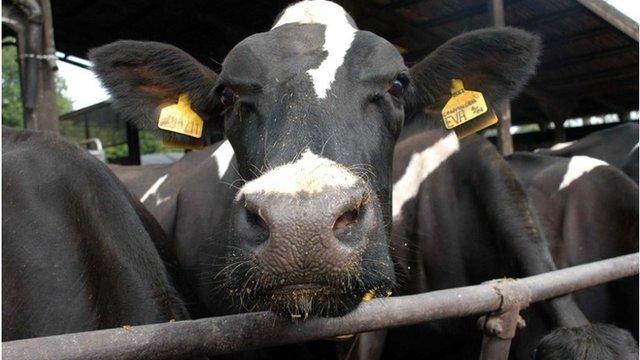Milk prices: Glimmer of hope for dairy farmers in 2016
- Published

Dairy farmers across Northern Ireland say they are struggling to maintain their businesses
When I first met William Irvine in July, he was feeling the effects of a prolonged slump in the milk price.
He and his son David have 140 cattle at a farm near Markethill in County Armagh.
The farm supports two families - David was back home, married and helping to run the place.
When we met again in early December, William told me that things had not improved.
We spoke at the Winter Fair, an event that acts as a showcase for the dairy industry and an opportunity for farmers to compare notes.
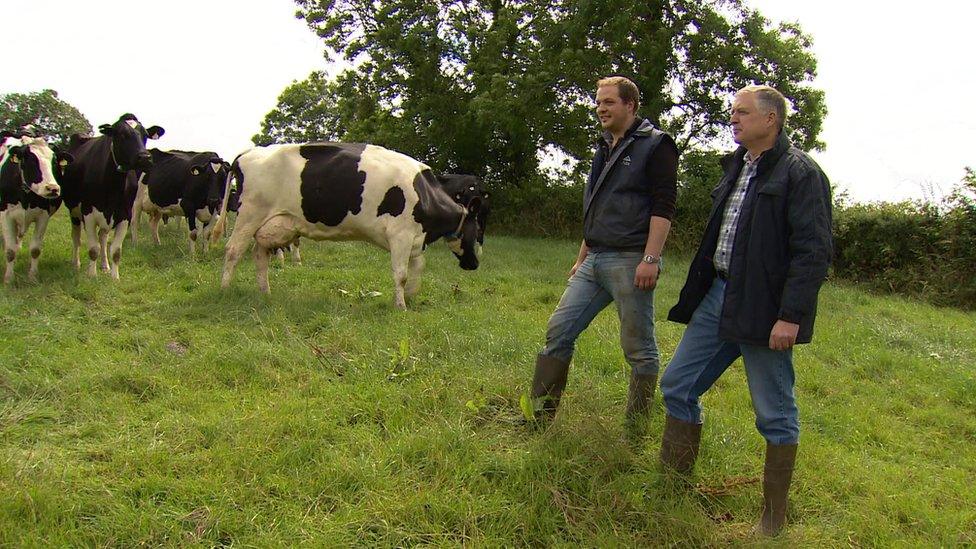
William and David Irvine saw the income from their dairy farm drop by 36% in a year
But William explained that in the intervening five months the situation had not improved.
"It's really been more of the same. The price is still low, well below production costs, so life has got no simpler," he said.
Bumping
Farmers have received their subsidy payments from Europe, but William said the money was still not there for the kind of continual investment that is needed to maintain the business.
It is a story that is being replicated on dairy farms across Northern Ireland.
While the milk price has stabilised and risen slightly since the summer, it is still only bumping along the bottom.
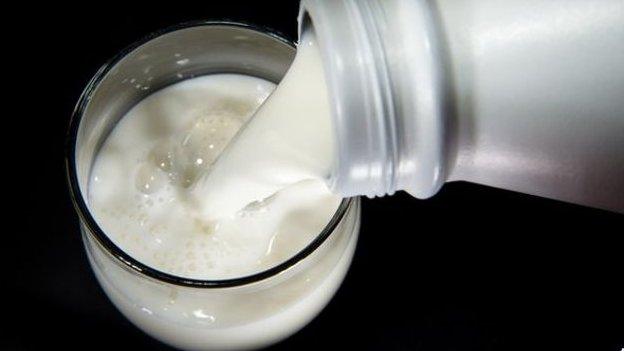
On average, farmers need about 27p a litre for their milk in order to break even
Latest figures from the Department of Agriculture put it at just over 20p a litre, well below what it is costing farmers to produce.
At this time of the year, it is even more expensive to make, because cattle are housed and are relying on feed instead of grass.
Traditionally, dairy farmers were prepared to put up with the peaks and troughs of the industry.
But now the lows are longer and deeper and prices are not reaching the previous highs.
It has sparked a rethink over the industry model.
Difference
Ulster Farmers' Union president Ian Marshall, himself a former dairy farmer, believes a mix of margin protection and fixed-price contracts may be the way forward after an "horrendous period".

Milk production in winter is more expensive than in summer as cattle rely on feed rather than grass
Margin protection allows farmers to insure a percentage of their production at a certain price.
When the price falls below that level the insurance policy will cover the difference.
It is a measure used in the United States.
Fixed-price contracts see processors guaranteeing farmers a set price for their milk, something that is increasingly being done here.
Mike Johnston, of Dairy UK Northern Ireland, also favours the margin protection model.
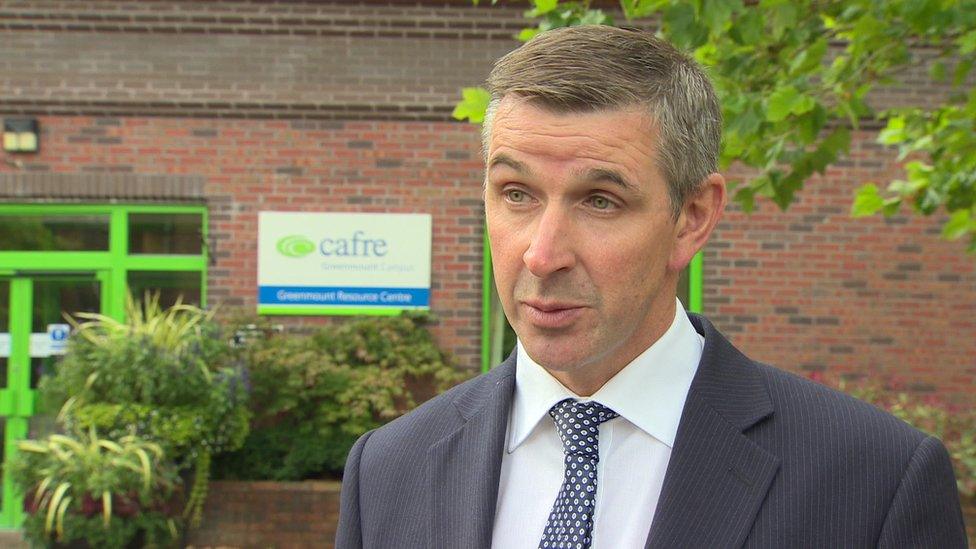
A mix of margin protection and fixed-price contracts could be the way forward, says the UFU's Ian Marshall
He told me the industry was seeing prices now that it had not experienced for many years.
He said farmers, though resilient, needed to know when the upturn would come.
Overproduction
Industry commentators are not being too specific about that.
There is a lot of talk about an improvement around the middle of next year.
Milk is a global commodity. Factors outside the control of Northern Ireland's farmers have driven down the price.
A depressed Chinese economy, global overproduction and a Russian ban on EU food imports have all contributed to the slump.
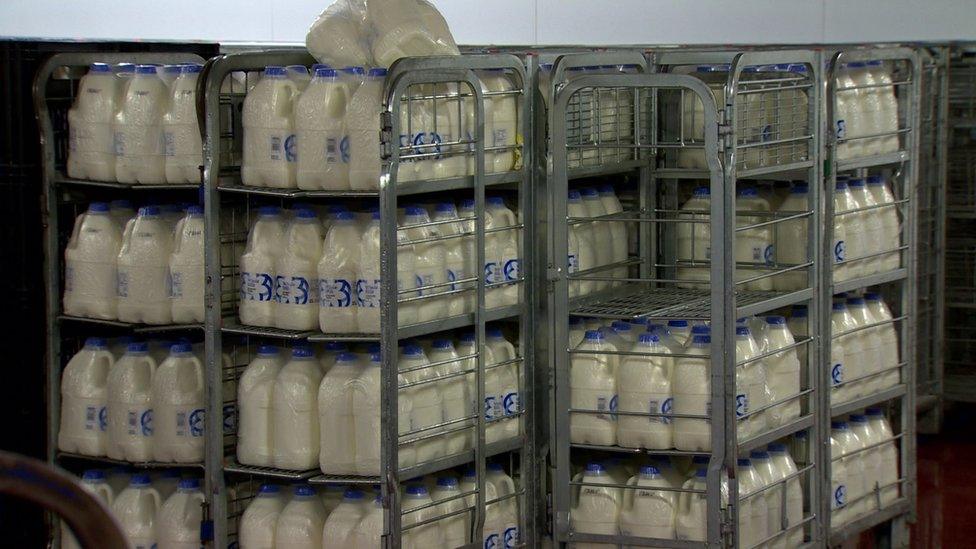
An improvement in the price of milk for farmers could come in the middle of 2016
When the improvement comes, it will again be due to things that happen elsewhere.
And the indications are that those changes may be starting to happen.
The United States has eased off production, and in the milk producing powerhouse of New Zealand they are culling lots of dairy cattle, which will cut supply.
But there is still a glut in the system.
Our farmers have little alternative but to try and hold on until it was worked its way out and the market rebalances.
- Published23 July 2015
